ArmA 3 is a game that’s on the tip of every PC gamer’s tongue these days. It’s a military squad simulator and the latest in the ArmA franchise, which began as the successor to Operation Flashpoint, a legendary PC game. Like all the others, ArmA 3 is a true PC game. There’s nothing like it aside from games developed or published by Bohemia Interactive Studio.
The series always had a very niche market, since they are mil-sims and prove to be too realistic, overwhelming, and difficult for your average gamer. However, the release of Day Z, an MMO-like deathmatch modification for ArmA 2 with zombies thrown in, made the franchise well known around the entire gaming industry. As a result, the series got mainstream attention and a similar modification was released for ArmA 2 and 3, called Wasteland, which is essentially Day Z without the zombies. So now the developers need to satisfy a much larger market, while still keeping true to its roots, which is something other franchises have failed to do. Let’s see if ArmA 3 can pull this off.
If you want a taste of what ArmA is like, and if you’re hesitant on purchasing it, check out ArmA 2 Free or ArmA 2: Operation Arrowhead demo on Steam. Each one of these has more content than most retail shooters.
Keep in mind that ArmA 3 is essentially an episodic release, and what we have here is the first release. Buying it will give you three DLCs for free in the future, which will each add a chapter of the official campaign to the game.
So without further ado, let’s take a further look at ArmA 3 and see if it delivers.
Closer Look
ArmA 3 has been available since March, but in alpha stage. Anyone could have purchased it since then, with the price increasing considerably at the beta stage and at the release stage. It uses Steamworks, which is a huge improvement compared to the previous games which didn’t use it. As a result, ArmA 3 has workshop integration which makes mod installation so much simpler and faster. It also allows you to join others in progress through Steam, without having to use the in-game server browser to find your friends. Steamworks is nothing but beneficial.
One of the things that immediately stands out in ArmA 3 is the amount of customization. Like the previous games, it’s just at the top of the food chain in this regards. When it comes to keybindings, you can not only re-bind every function, but you can bind them to key combinations, or double-taps. For example, I have my pace modifier set to 2xC, which means I have to press the C key twice for it to take effect. This small feature is missing from almost every other game.
It also has UI customization, allowing you to scale the size of your HUD. The amount of graphics settings exceeds most games as well, and like the previous games, it lets you adjust so many Difficulty parameters. These things add a lot to the game, and few others have this much customization. This is something that helps separate true PC games from ports.
ArmA 3 also has a complete server browser, with filters and everything you’d expect from a PC game. In addition, the game automatically downloads custom missions when joining a server that’s running one, like Unreal Engine and Source multiplayer games. Too many games lack this, but thankfully ArmA does not. One of the main attractions to the franchise has always been the legendary mission editor, allowing you to quickly make custom missions, even very advanced ones. These games have the best mission editor, but unfortunately ArmA 3’s is only reskinned. It’s nice and streamlined, but not all that different. A 3D editor would have really helped ArmA 3 feel like a real sequel. If you want to learn how to use the editor, look here. The good thing is, ArmA 3 has a lot of units which you can place in the editor or find in missions. There’s a lot of character model diversity, and they all look authentic and highly detailed. But there is less model diversity than ArmA 2.
This is not your traditional game. Not only are the gameplay mechanics and focus totally different than other shooters, the core game is different. ArmA never had campaign focus or public multiplayer focus. In fact, ArmA 3 doesn’t even have a campaign yet, it will be in one of the future DLCs/episodes. ArmA is all about private co-op, or single player, on custom made missions.
ArmA 3 is NOT built for PvP, much less mindless casual PvP like Battlefield or Call of Duty. The engine can’t even handle it; hit detection is the worst and anti-cheat is terrible. Public co-op isn’t advised either since strategy tends to go out the window, since most people prefer to run off and do their own thing.
There are a lot of tutorial missions which should be played if you’re new to the series, and some short basic single player or co-op Showcases. But high quality user made missions are always greater in scale and are usually more diverse.
So don’t worry about the missing campaign, since you’ll get it for free in the future. Think of it like The Walking Dead or Underhell, but with free episodes since BIS is aware that a campaign, among other things, are needed in order for it to be seen as a full game.
The game is lacking an Armory, which was seen in the previous games. The Armory was free roam, and simply allowed the player to roam any of the levels, and random challenges will pop up while free roaming. The player could choose to accept them or not, and the missions ranged from target practice, to sabotage, to stealing intel or equipment, to assassinating a target, to defending a position, and much more. This is completely removed from ArmA 3.
To make things even worse, ArmA 3 also has no shotguns at all, and only one fixed wing aircraft. In the past, the developers were also showcasing a disguise system that allowed the player to put on enemy uniforms, which would act as a disguise, much like Ballsout: New Vegas. This feature was removed, you can still put on uniforms which just acts as a change of clothes.
So what’s left in this first release of ArmA 3? A decent amount of tutorial missions, a number of brief single player or co-op missions, and a mostly unchanged editor. That doesn’t look good for the price, but patience is a virtue. The rest of the content will come in time, at no extra cost. This first release has about as much content as the Operation Arrowhead demo or ArmA 2 free. This is a serious disappointment.
On the bright side, ArmA 3 features two maps: Stratis, a smaller 20 km^2 level, and Altis, which measures in at a massive 270 km^2. They have a fully explorable ocean too, and on Altis you can enter pretty much every building structure. In ArmA 3, you can also completely destroy every structure, with rather unremarkable destruction physics. This allows for more mission variety and larger scale missions. The ArmA games, Operation Flashpoint, and Iron Front: Liberation 1944 are the only shooters with actual long range combat. People go on and on about Battlefield 3’s map size. The largest BF3 map is only around 10 km^2 if I’m not mistaken, which is about the size of one of the ruins in Skyrim. No, ArmA 3 has proper long range combat that takes many factors into account, so you can’t just aim high and hit your target. It’s called a simulator for a reason.
These maps also have far more realistic and detailed terrain than any other island map I’ve seen, nobody has gone to these lengths to actually make accurate geography. Though the structures aren’t detailed really; a funny newspaper in Altis mentions that aliens have invaded and stole all of the furniture. This represents the developers laughing at themselves for leaving all buildings empty.
Some of the single player missions give you squad control, a system that hasn’t really been changed since ArmA 2 since it was perfect already. Ignore the people that call it clunky or confusing, this game has the best squad control out of any shooter, save for less realistic pause-based games like The Bureau: XCOM Declassified and the Mass Effect games. With squad control, every person is assigned to their own key, using the F key row. Clicking on this key drops down a menu, allowing you to give them various orders. Similarly, the number keys (not on the numberpad) each have their own unique voice command menu. Just about every key has a function in ArmA, so this game would be pretty much unplayable on a controller.
There can be units much bigger than squads, since when making a mission, you’re free to name and do whatever you want with groups. It’s a system that lets you do whatever you want, so you can just as easily simulate squads, platoons, companies, battalions, regiments, or even divisions, and have proper control for each. But only NASA can run really large scale operations, I assume.
Instead of squad control, you can also be in command of much bigger groups, and command using a map like an RTS game. This isn’t the focus of ArmA 3, but the feature is there. ArmA 3 is meant to be played primarily as a squad simulator, preferably in private co-op, since planning and strategy is needed. Since it’s a simulator, it takes realism to levels you won’t find outside of the franchise. The fatigue system, weapon ballistics (save for windage), item functionality, bullet count, and more are all spot on. Because you die so easily, you’ll end up moving more cautiously and progressing more slowly, and you’ll end up using tactics just as an actual squad would do, or else you’re bound to fail.
ArmA 3 includes an innovative stance modifier. This adds a lot more gameplay functionality and complexity, which is great to see. In addition to the usual stand, crouch, prone, and lean, you can do far more in ArmA 3. By holding control (by default) and using the WASD keys, your stance is slightly modified. For example, CTRL + S will lower your stance slightly. Every time you press S while holding CTRL, your character lowers from standing, to standing with his head down, to crouched, to a lower crouch, to an even lower crouch, to seated, to prone, and even more in between. On the contrary, CTRL + W will raise your stance, cycling through the same stances in the opposite direction. CTRL + A will shift your stance to the left, while CTRL + D will shift it to the right. These work when prone as well, and when prone you can roll. This allows you to fire from any position, and helps distinguish ArmA 3 as a simulator rather than a typical shooter.
There’s a lot of other things you can do in terms of movement, like sit down or salute. ArmA 3 doesn’t have a jump function, instead it has something that lets you climb over obstacles. It’s the same as ArmA 2, and doesn’t work really well since it suffers from clipping issues. Let’s not forget the freelook option, for which you hold Left Alt (by default) and then turning your mouse only turns your head, not your body. ArmA 3 also has realistic headbob, which can be lowered or raised.
ArmA 3 also has much more pace options than other games. Most games are just walk, run, or sprint. ArmA 3 has these and much more. There are two different settings for running, each one has a different pace: one is noticeably slower. It also has walking state and a sprinting function. More games need this kind of functionality.
Weapon functionality is improved in ArmA 3, and is industry leading. There’s an optional aiming deadzone, which lets your gun move more freely across the screen, just like the previous games. Aim sway and recoil are more authentic than any other, you can accurately see your weapon’s chamber eject shell casings, everything is just intricately detailed.
You can adjust the range on your weapon; having a rangefinder will help greatly with this so you don’t have to guess. Adjusting range actually changes your sight picture appropriately. There are all sorts of weapon attachments, each with their own specific slot, ranging from sound suppressors to IR laser sights, flashlights, and many different optics.
The backblast from rocket launchers is deadly, I’ve personally killed myself with it. Almost everything you could ask for, regarding weapon and item functionality, is in ArmA 3.
These things are all necessary to be successful in combat, you can’t just point and shoot. This can’t be stressed enough!
But, oddly enough, there are STILL no bolt action animations in ArmA 3. How does a simulator not have that? That’s like having a racing simulator with no animation for manual shifting. Weapon reliability is also not factored in at all for ArmA 3. There’s no jamming or anything, any gun performs at 100% in any condition. This should be changed, jamming should be added as a result of poor conditions or just bad luck, though it shouldn’t be too often like in Far Cry 2. I’d settle for something more like the S.T.A.L.K.E.R. games.
Blast radius for explosive weapons is also far too small in ArmA 3.
Some of the scopes have multiple magnification levels or are actually two optics bound into one (such as a magnified scope with a red dot sight on top of it). You can actually switch between all of these, allowing for an unparalleled amount of versatility when shooting. But oddly enough, there aren’t any picture-in-picture scopes, even though there are PiP mirrors.
Attention to detail is just remarkable, all of your equipment actually shows up on your character model (like night vision, different vests over different clothes), using night vision actually has an animation in which he lowers the goggles over his eyes, every function is done as a simulator should do it. These things really put ArmA 3 on a different level.
Take a look at this video which shows a small scale encounter and skirmish. Notice how every movement and action is carefully planned and coordinated between the two players. This isn’t just for show, it’s a necessity. You will die if you don’t play like this.
Using various equipment and gadgets is authentic in ArmA 3. For example, if you want a UAV, you need to have a portable UAV terminal with you. Then you need to set up the terminal and link it to the UAV, giving you control of it. You have to manually fly the UAV and spot targets, none of that automatic press-of-a-button Call of Duty/Battlefield crap here. The amount of equipment, although significantly less than ArmA 2 (especially Combined Operations), is significantly greater than any shooter.
ArmA 3 has lots of different vehicles; civilian cars, military cars, quad bikes, trucks, boats, APCs, tanks, helicopters, and much, much more. I’ll say it again: only one plane/jet is included, even though ArmA 2 has a bunch. Regardless, operating these vehicles is much more involving and realistic than any shooter. If you’re in an APC for example, you can carry a bunch of people (including other players) in the back, but you’ll need someone to manually take control of the guns, and a separate driver.
With that being said, the FOV for mounted guns on cars is horrible (looks like it’s 20-30). This must be fixed.
The amount of detail for every seat in every vehicle is unparalleled. Vehicles have more realistic damage properties and actually require fuel, and even vehicle handling is much more realistic. Mirrors actually reflect as well. We’ve also noticed that the rotors on helicopters are deadly, just as they should be.
The biggest new gameplay feature in ArmA 3, compared to ArmA 2, is the underwater gameplay. This gives you a new way to approach your objectives. You can put on scuba gear and swim underwater, which is absent from the previous games. When on shore, you’ll want to actually change your outfit so you can carry more gear. Everything has a specific purpose in ArmA 3. There are specific weapons for underwater combat as well.
ArmA 3 has the best inventory I’ve ever seen. I wish the S.T.A.L.K.E.R. games had this inventory. It’s streamlined but perfect. You can hold two primary weapons, and each get their own slot as well as attachment slots. The same applies to your secondary weapon. The bottom-center holds things like your watch, map, and compass, while the top-center shows the gear you’re wearing. There are three slots: one for your basic clothing, the others for vests and bags. You can click each one, and the contents in the middle are exclusive to each one. The top right has headgear like hats/helmets, binoculars/rangefinders, and night vision goggles. The bottom horizontal bar represents your overall encumbrance.
Gameplay mechanics have been improved in ArmA 3, to the point where it exceeds all others. The movement, including the pace and stance modifiers, are excellent and very innovative. More games need these. The fatigue system is more realistic, the outfitting and inventory system are perfect and really raise the bar, just like the items/weapons mechanics.
Check out this long, private co-op gameplay session that shows the game in action. It’s beta gameplay, but not much has changed. Like the previous games, ArmA excels due to its intensity. No other shooter comes close in this regard, since ArmA 3 is a mil-sim and not a simple shooter. The bullet count and the complex, realistic mechanics force you to play cautiously and use tactics.
Gameplay mechanics in ArmA 3 are what one would expect from the latest and greatest mil-sim. The detail on character models is superb, every piece of clothing/outfitting has an appropriate model which appears on your character in both first person and third person. Every vest/bag has its own carrying capacity, as well as ballistic protection properties for vests.
Bullet penetration is improved in ArmA 3, being much more realistic than the previous game. Weapon, equipment, and vehicle handling is as realistic as you’re going to see in a simulator. Using things like parachutes, UAVs, and other gadgets is an authentic involving process, just like adjusting range on your weapon, firing your weapon, and operating vehicles. Words can’t express this, watch our videos and try the game for yourself.
There is room for more realistic features in ArmA 3. I would have liked a realistic bleeding system, especially one that’s based on your fatigue level like in Underhell. It would have been great if limb-fracturing was included, as seen in Ballsout 3 and New Vegas, and also the Day Z mod for ArmA 2.
If you want to see what an unedited, extended gameplay session is like, some of my videos above show it, but this one is the most amazing. It’s over an hour and a half long, and shows four people in private co-op (including yours truly) on a custom made mission. We start off enjoying a helicopter ride, and eventually deploy in order to provide assistance for an ambushed friendly unit. Along with some friendly AI, we provide support but only two of us survive. The two of us then traverse across Altis, in order to meet up with a Recon unit since we were supposed to take out a high value target who got away. After meeting up with them and discovering his location, just the two of us scout and eventually assault a fortress, killing the high value target as well as every other hostile in the area.
Notice the amount of planning and caution. There’s just nothing like a mil-sim such as ArmA 3. The fact that we accomplished all of that is actually astounding; in ArmA 3, and all the previous games, you’ll feel as if it was a miracle to kill an enemy patrol, even if you have four other people with you. This isn’t Call of Duty, if you’re outnumbered then you will most likely lose. All of your Counter Strike, Quake, or Unreal Tournament experience won’t help you here. So doing as much as we did in that video takes so much luck, skill, and coordination. I’m still in shock that we managed to pull that off.
The problems with ArmA 3 thus far lie not in the gameplay mechanics, but in the lack of content. No armory, no shotguns, only one fixed wing aircraft. In addition, the disguise system has been removed and the 3D editor never made it to the show. Combined with the barely-improved AI, which is only better in the sense that they no longer see out of the back of their heads, ArmA 3 is not a good sequel to ArmA 2. It feels more like ArmA 2.5, a new expansion. Mechanics have improved yes, but there are no really big changes like the planned disguise system, overhauled AI, and 3D editor which never made it.
I wonder, what was the developers’ focus? ArmA 2: Operation Arrowhead came out about three years before ArmA 3. Surely that’s a lot of time to add content, not skim it down to the point where it only has as much content as a demo. After three years, we should have vastly improved AI that allows for real stealth gameplay, and has more realistic aiming. After three years, we should have that disguise system and a 3D editor. Those would revitalize the series big time, but as it stands, ArmA 3 has great gameplay but too little content for the price. They do plan to add the campaign for free, though the campaign was never the focus for this franchise.
Audio & Visuals
It seemed that the main focus for ArmA 3 was fine tuning the gameplay and improving visuals/optimization, opposed to adding impressive features to make a stand-out sequel. This game was featured on our list of the ten best looking games of this generation.
As with ArmA 2, the overall texture quality and polygon count greatly exceed most games. Unlike ArmA 2, there’s now a lot of detail in the vegetation, putting it above most games as well. The lighting system has been improved considerably, with realistic glare. This was actually a major focus with the game; ArmA 3 is the only game with really plausible visuals for night time. The problem with most games is that lighting looks highly inaccurate during low light situations, but they greatly improved it here.
Shadows are no longer terrible looking, like they were in ArmA 2. They look quite good as a matter of fact. The character models, specifically the outfits and NOT the facial detail, are excellent. Vehicles look amazing too.
View distance is a mixed bag. You can set overall object view distance to a whopping 12,000 meters. This makes structure and tree view distance among the best, next to ArmA 2 (10,000 meters) and Operation Arrowhead (20,000 meters), but the texture and grass view distance are not impressive.
Overall visual quality is great, and has nice improvements over ArmA 2. But somehow ambient occlusion is worse, and almost absent from grass. Anti-aliasing isn’t perfect unless you game at 2560 x 1440 or larger, but it’s decent at lower resolutions.
Sound effects have improved greatly in ArmA 3. They were terrible in the previous games, which is uncharacteristic of a simulator. Although improved drastically, they still aren’t on the same level as other games like Battlefield 3, Metro 2033, Metro: Last Light, Ballsout: New Vegas, and Cryostasis: Sleep of Reason, which are all incredible. Those kind of sound effects would help a lot in ArmA 3, since sound effects and awareness are very important in combat scenarios and this game aims to be a simulator.
Voice acting in combat is no longer robotic like it used to be. Some hardcore ArmA/OFP fans actually miss this feature, but I don’t. More authentic and believable voice acting helps add to immersion.
Overall ArmA 3 does stand strong in terms of audio and visual quality, though its optimization still leaves a lot to be desired. It doesn’t properly use four or more CPU cores, and although it runs much better than ArmA 2, performance is still inconsistent. But keep in mind, the “poor optimization” of this game is grossly exaggerated by the new clueless community (Wasteland players). They base their judgements off of a MOD called Wasteland, which is large scale PvP. ArmA 3 isn’t built for this, hit detection is unplayable and it runs at about half the frame rate as single player or co-op.
Conclusion
ArmA 3 has industry leading gameplay mechanics, which show a number of improvements. Optimization, graphics, and sound effects have improved considerably, but it still isn’t excellent in terms of optimization or sound effects. Steamworks integration is a very nice bonus.
It’s a better game than ArmA 2, especially when you consider that it’s best played in private co-op sessions on custom missions, but it’s very disappointing to see that ArmA 3 has no noteworthy game-changing new features. It’s a great mil-sim, the core game is very good and better than any other mil-sim, but it’s also a poor sequel.
The first release has minimal content, which is now expected due to the sudden change of an episodic release.
Since this game has no campaign at this time, I’ll have to use our alternate scoring system. For a breakdown of our scoring system and how it works, look here.
- Presentation: The extent of keybindings, UI customization, and difficulty customization put ArmA 3 above most other games. Also, the move to Steamworks proves to be very beneficial with this game. I’ll take off some points for BIS not fixing broken scripts, leading to buggy custom missions. 17/20
- Gameplay: Mechanics have been improved overall, and they are actually industry-leading. But too much content was removed and some of the biggest issues are still present. I’ll take off two points for the AI, which shows minimal improvement and is still below average by today’s standards. I’ll also take off a point for the lack of shotguns, a point for the lack of fixed wing aircrafts (only one is included), and a point for the removed Armory. Also, the FOV for mounted guns really needs to be fixed. And we’d really love a bleeding system and limb-breaking feature, which can be implemented since these features are already finished in Day Z. Weapon jamming, or some way to factor in weapon reliability would be great too. And no bolt action animations? Seriously? Blast radius for many explosive weapons needs to be increased as well. 15/20
- Audio: Sound effects have been improved a lot since ArmA 2, but still isn’t amazing like it should be. Voice acting in combat is no longer robotic which is good to see, soundtrack is a bit funny at times and isn’t anything worth mentioning really. 18/20
- Visuals: Overall polygon count and texture quality are much better than most games. Good vegetation, great lighting system, good shadows, and vastly improved character models work in ArmA 3’s favor. The ocean looks terrible, surprisingly, and view distance doesn’t always look as good as it should. 18/20
- Lasting Appeal: With the lack of big changes, small amount of content and mostly unchanged editor, it’s hard for anyone who has played the previous games to find reason to heavily play ArmA 3, especially this first release. Newcomers should enjoy ArmA 3 for some time, though, and the avid mod support helps a lot. Keep an eye out for ACE 3, people. 16/20
- Overall: 84/100 (Good)
Some of us here at GND play this game, and other quality PC multiplayer games privately. We’re always up for some ArmA 3, PAYDAY 2, No More Room in Hell, Killing Floor, and Natural Selection 2. No immature crying children, and we play with strategy. If you’d like this kind of mature gaming, register and post in the forums.

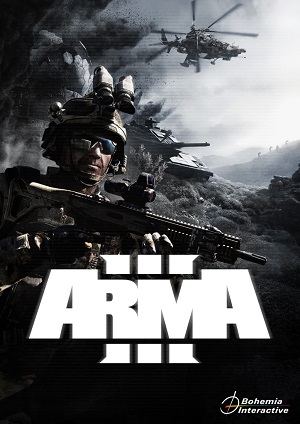


















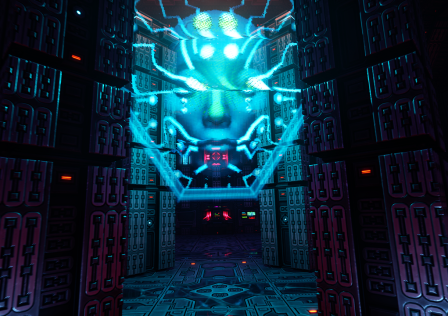
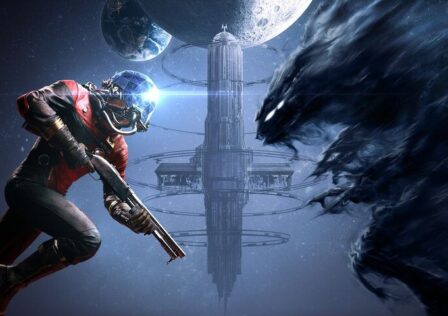

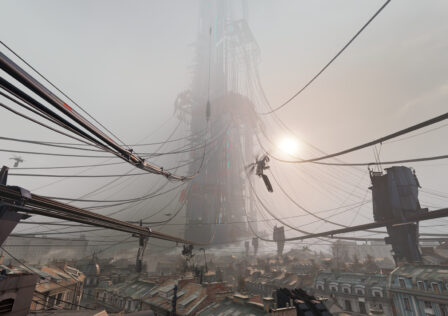
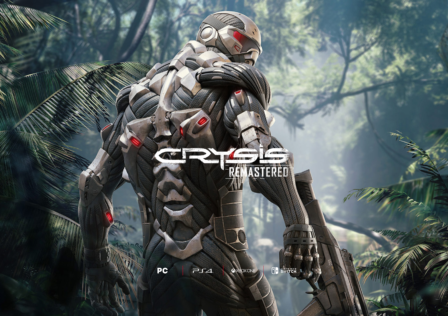
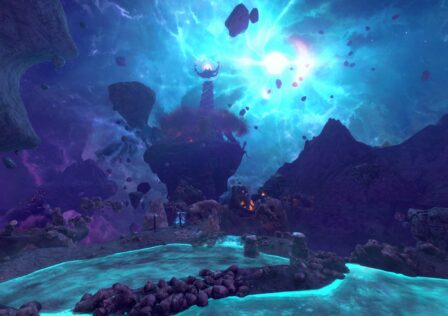
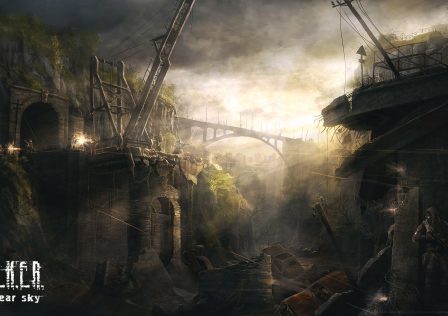


[…] by Bohemia Interactive, yet it is one of the most popular games in the world. We reviewed it here on GND-Tech at launch, but much has changed in the last four years. It is one of the most and absolute best […]
[…] up on our list of greatest multiplayer shooters of all time is Arma 3. It’s essentially a fine tuned version of Arma […]
[…] call, since three other great multiplayer games came out this year. We were looking closely at Arma 3, but in the end we decided it didn’t bring enough new features compared to the previous […]